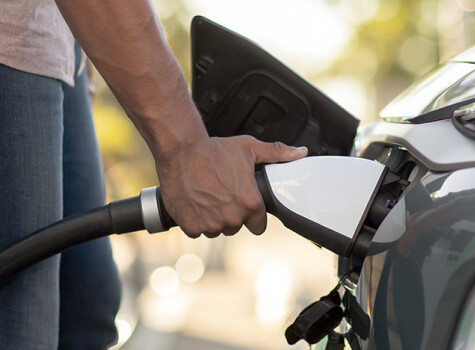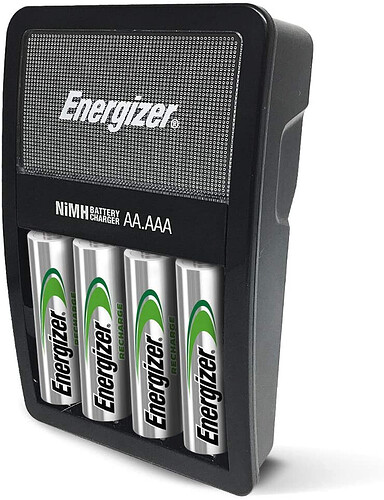Disappointing EV only range of 25 miles. However, that still probably covers a lot of short commutes and grocery / soccer practice runs.
Really need to get that # up to about 50 miles. I think that’s where you are coming about 90% of most people’s driving.
If we could get most families that have 2+ cars to have one of them a plug-in hybrid and the other all-electric, then that covers everything as long as the family can plan to take the plug-in on longer trips.
Lots of good discussion in here! I am an avid EV fan and total Tesla fanboy, so I’m loving the discussion and comments.
The over-the-air updates, longevity, lack of maintenance needs, and ridiculous performance specs have me excited about current and future EVs. I have already ordered a dual motor Cybertruck, which I plan on covering in a full Niner green vinyl wrap. But I probably won’t see that beast til late 2022 at the earliest, as the Austin factory is still a dirt field, and also I’m way down the reservation list.
The wife wants to get a model Y within the next few months, so hopefully that happens, and we can ditch gas cars for good.
More longer term, we hope to eventually get a Tesla solar roof with Powerwalls set up, and juice our EVs from “home grown” electrons. This is a ways down the road though.
I will happily offer test rides to any haters and nay-sayers so they can see how amazing these electric beasts are 
Dumb question here. Are all the chargers and charging networks compatible? Can I pull into any charging station and charge up any EV like I can pull into any gas station and put gas in my car?
There is a plug type that was standardized recently that all the new cars are using. Not all electric cars can charge at the max speed on each charger and not all chargers can charge each type of car the same. For instance you can charge a Tesla on Electrify America’s (VW owned company) chargers, but it won’t be as fast as on Teslas superchargers.
If I recall correctly the standard charging receptical is called J1772, which is the round top connector picture below. The bottom optional additional 2 slot plug, which is used in combo with the top one for fast / super charging, is called an SAE or SAE combo. I have no idea how the names came to be.
For fast charging you have one plug in that goes into both charging recepticals. Like so:

CCS on Electrify America’s network can charge at speeds up to 350kW, while our CHAdeMO chargers can charge at up to 50kW. Electrify America stations have CCS chargers with varying speeds, ranging from 50kW up to 350kW. Not all EVs are capable of charging at the charger’s maximum power level.
The original V1 and V2 Tesla supercharging stations charge with up to 150 kW of power distributed between two cars with a maximum of 150 kW per car, depending on the version. They take about 20 minutes to charge to 50%, 40 minutes to charge to 80%, and 75 minutes to 100% on the original 85 kWh Model S.
Not a dumb question at all! about 99% of chargers are one of three types:
The two most basic types are chademo and J1772. Most EVs will come with an adapter so you can use whichever one the car isn’t already set up to accept. I really wish charging companies would collaborate and unify around a common format the way all gas pumps are identical. From what I understand, this is happening with J1772 chargers, and this will be the ubiquitous format in the years ahead.
The third is the DC fast charger. This one will juice up the car the fastest, but alas is a different plug (CCS/SAAE). Again, most any EV will come with all necessary adapters.
Then lastly there are the Tesla superchargers. The latest version (V3) of these will juice you all the way up in about 15 min. But (as of now) these are only compatible with Tesla vehicles.
EDIT: Kudos to NA for beating me to the punch with some great info and a handy dandy visual ![]()
Lol I can’t believe I beat Chisox to the punch.
The charging speeds are pretty regularly being updated. Some of it seems to software related, but there are hardware upgrades necessary for some levels of supercharging. Anything we type now will probably be outdated in 6 months.
I wanna see just how powerful these Solid State Battery chargers are gonna be. I mean, that’ll probably be like pumping lightning into your car…

So a few things to ponder as we dream about a world of electric vehicles. The electric grid in the US is straight garbage. Reliability issues everywhere especially on West coast and northeast. That has to be addressed sometime soon as more power generation is placed in service daily. Second, power generation is not as big of a concern as power storage. It’s not like there is a box where energy is stored from the grid. So all of this solar and wind generation means nothing if everyone is charging at night. This means that more power will need to be generated using fossil fuels or nuclear. Many companies are working on power storage solutions, but none are on the forefront at this time. Also, fast charging has limitations. You still can’t get around Ohm’s law and heat generation through charging. More Amps in means more power generation, bigger cables, and more heat. Maintenance at these charging stations will be critical. Loose connections with high amperage means that the plug and your car just melted together.
For road trips and long hauls a battery swap system is the best option in my opinion. Tesla had this going for a while, but must have bailed on the idea. This would allow charging of batteries to remain slower limiting the power consumption for that location. Think about a gas station with 20 pumps. To service the same number of cars you would need 40 charging stations if 10 minutes per charge is the answer. This charging station would be the equivalent of a substation currently on the power grid. The cost of power wouldn’t be the same as at home either because you have to pay for the power, infrastructure, labor, and profit of the charging station.
If legislation tries to drive EV usage ahead of consumer demand expect big problems ahead.
Thanks guys for all the information. Good to know there is good compatibility across the board and it’s getting better.
As far as the battery swap option goes. I recall an article in road and track about a company doing that in China with some success.
I think you are falling victim to traditional thinking when it comes to charging stations. The number of cars using charging stations will be much lower than gas stations because the vast majority of charging will be done at home overnight. Shouldn’t have much need for charging outside of long distance trips.
As electric cars become more common charging stations and probably eventually wireless charging parking spots will become amenities at apartment complexes as well.
As far as capacity goes, it will undoubtedly need to expand, but by how much? Nationwide energy consumption during peak daytime usage is roughly 50% higher than at night, so that means in theory there is quite a bit of excess capacity available during non-peak hours.
The us consumes roughly the equivalent of 13 billion kWh of energy from gasoline every day…but when factoring in efficiency of internal combustion engines it is actually closer to 4 billion. We have capacity to produce trillions of kilowatt hours of electricity with existing facilities that are running well below capacity after the sun goes down.
I think the distribution capacity is going to be a bigger limiting factor than actual generation capacity. The distribution infrastructure is very poor in older areas of the country, but with the promise of more revenue from increased electricity usage, you’d think companies would have no problems getting capital infusion to improve their networks.
Maybe, but think about the economics and how people are still people. Not much money in a restaurant on the interstate with only 2 charging locations. Then what if someone shows up with a 75% charge and wants to top off while eating. The others who are empty are screwed. People looking to profit off of charging cars would not want to limit to long haul customers. Maybe you will see super stations every 40 miles where there are 100 charge locations similar to oasis locations on a turnpike. This was my original thought versus having 2 or 3 charge spots in multiple locations.
For me I am hoping two things. One is that the new administration puts in more incentives for solar energy, and two that this battery technology lives up to the hype so that I can move off of the grid. With the increasing electric costs that I see on the horizon, buying 30 year panels and 30 year batteries seems like a good move.
I have been thinking about starting a coffee bar / sandwich shop with big clean restrooms and multiple charging stations (like a couple dozen) in partnership with someone like EA when BEVs take off.
Electrek: Tesla opens new world largest Supercharger station with a whopping 72 charging stalls.
The Tesla charging stations at the local mall sit empty most of the time.
Charging at home at night or while at work is what the vast majority of people will do. Workplaces will need to put in more charging options to help with this (maybe some additional tax incentives for installing and maintaining will help, though I think some currently exist). The best option will likely be for workplaces to put in solar panels on car covers in parking lots that people can plug right into and also protect their cars from sun and elements, but they will likely need supplemental generation to cover it if enough people shift to EV.
Fossil fuels are the go-to for supplementing peak power right now, but those almost always happen during the day (more A/C, more work places open, more service establishments open, etc.). A shift to higher demand at night will even out a lot of parts of the country. But we really need better and more battery storage to fix the issue long term. As Dowless mentioned above, a massive investment in upgrading the electrical grid would be smart, probably need to be at the federal level (a lot of experts are calling for something on the level of the interstate highway system). We could also protect our system better from solar storms while we’re at it.
InsideEVs : NIO Announces 150 kWh Solid-State Batteries For 2022.
It won’t be long before electric vehicles take over honestly. 5 years ago people were saying 2050 or later, but with rapid development of battery technology, I think the 2030s will be the tipping point where they are the most common type of new car in the road.
They are already 54% of all cars in Norway after just a few years of dominating sales.
I think most people are on their last or penultimate purely gas powered daily driver.
I also wonder if WFH trends are going to put a slight dip in traffic and car purchases. Some families who WFH may decide they really only need 1 car, or only need to buy one new car when they may have replaced both previously.
I gotta say I love my 500e. It’s perfect for a commuter car at 50 miles round trip. It’s only an 84 mile battery, but that is plenty for most of my needs. It’s gonna tide me over until the technology sorts itself out. I figure 5-7 years from now things will be quite different just like the solid state batteries mentioned here.
I do think I’ll be 3 days/2 days a week WFH scenario once I go back though.

